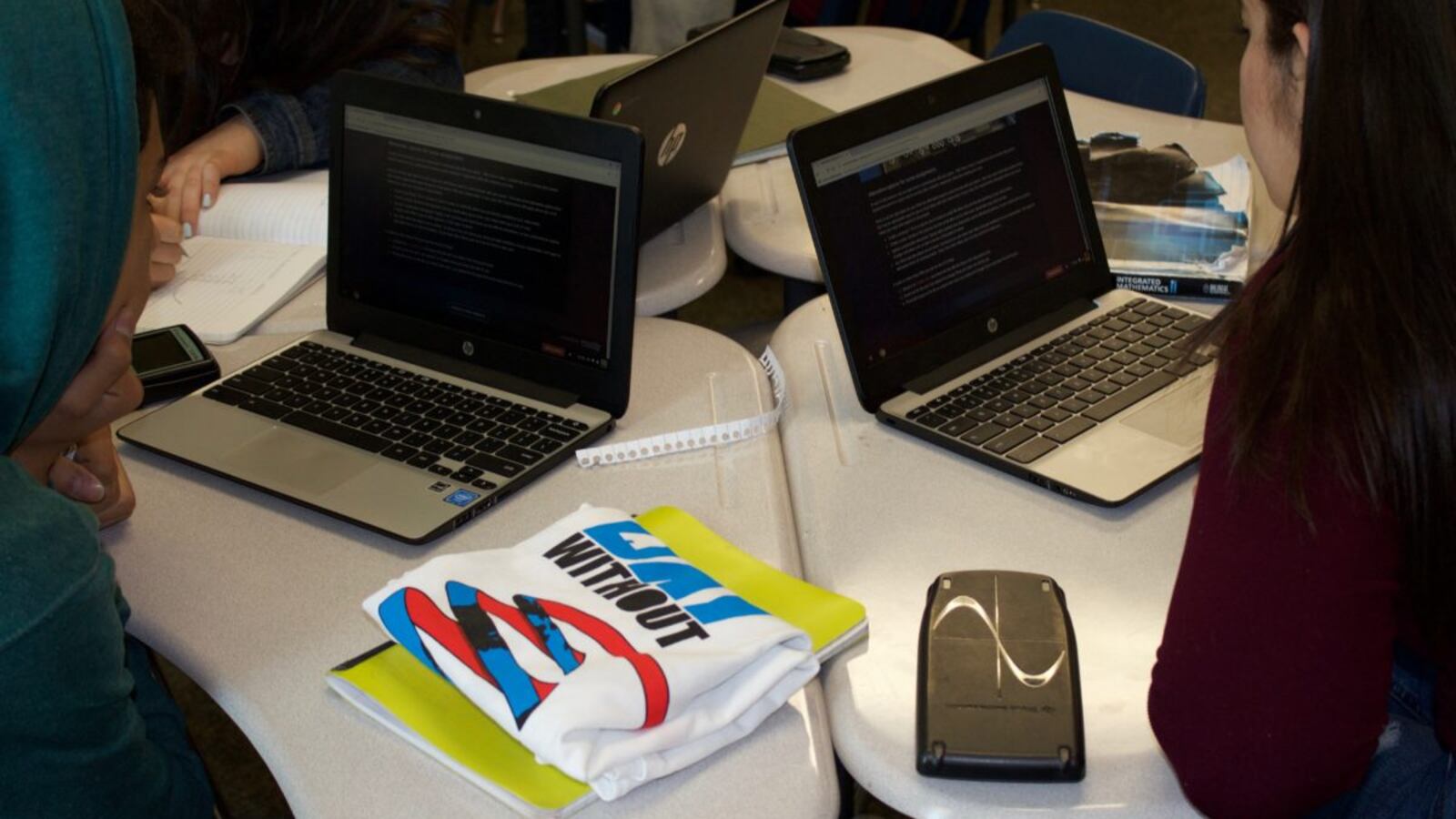As in much of the state, Aurora Central High School’s average SAT scores dropped this year — but the consequences of that decline could turn out to be particularly heavy.
The 1,900-student high school in northwest Aurora has been working under state orders to improve. Now time is up, and state test scores for ninth, 10th, and 11th graders released Thursday show that the school failed to make big gains and even dropped in many cases.
Aurora Central High School is in the bottom 10% among high schools statewide, although the ranking excludes small schools with scores concealed by the state for student privacy. The school’s average scores on the SAT are also lower than Adams City High School’s, another chronically low-performing school under state orders for improvement.
State test scores will play a big role in school ratings that the Colorado Department of Education plans to release next Monday. Aurora Central needs to receive a higher rating this year to avoid further state action.
Graduation rates, college enrollment, and growth scores — a measure of how much students improved compared to their academic peers — also factor in. Growth scores for high schools haven’t been released yet this year.
Through a spokesman, the Aurora district declined to answer questions or make the Aurora Central principal or other district officials available to discuss the school or its test scores until after ratings are public.
The State Board of Education in 2017 approved Aurora Public Schools’ plan to grant its high school the autonomy to try to improve on its own, with help from an outside company.
The state gave the plan two years to show improvement.
Although Aurora Central’s latest scores decreased, the school’s dips were in some cases smaller than for other better-performing Aurora schools. Aurora Central’s average SAT score, for instance, dropped 18.7 points from last year, compared with Aurora West College Preparatory Academy, which saw its average SAT score drop by 39.6 points.
Bruce Wilcox, the president of the Aurora teachers union, said those signs offer hope that the school is improving.
“They’ve had pockets of growth in some areas,” Wilcox said. “It would be interesting to see if they can build on that growth this year.”
A state progress monitoring report from a year ago reported that changes were going well. Attendance had improved, student referrals were down, and more students were taking concurrent enrollment courses to earn college credit. However, achievement remained low.
“Local data show positive trajectories in some areas, but state performance data has yet to reflect significant increases in academic achievement and growth, which remain far below state expectations for all groups of students,” the report states.
If the school fails to earn a higher state rating this fall, the school would likely face the State Board of Education this year to determine if it should order a new improvement plan.
The State Board has limited power in trying to improve chronically low-performing schools and districts, but it can request the school be handed over to a charter operator or it can order it to close.
The state can also order an outside company to take over management. That’s what the state did after the Adams 14 school district failed to meet a deadline for improvement last year. Teachers unions have filed a lawsuit to challenge that order.
To avert such an order, Aurora voluntarily put two other low-performing schools under external management.
Keelie Gray, 18, who graduated from Aurora Central in May, said that as a high-performing student at the school she felt the school’s improvement focus wasn’t on her. She said she didn’t feel that many of the recent efforts to improve the school made much of a change.
But, she said, Aurora Central is still a good school.
“I want people to know there are good students that are working hard,” Gray said. But she added, the school could use “an extra boost” of outside help.
This year’s state test scores will also determine the future of two Denver schools: Manual High School and the Montbello Career and Technical High School. Both schools have had five years of low performance ratings, meaning failure to move up this fall will trigger the state to hold a hearing to weigh ordering an improvement plan.
State officials typically weigh Denver schools against their school district’s performance rating, instead of the state’s. Denver crafted its scale taking more factors into account, but still relies heavily on state test scores. Schools often don’t fare better under the district ratings than they do under the state’s system.
Test scores for Manual show a lack of big gains. Manual’s ninth graders on average scored higher than last year’s ninth graders, but 10th and 11th graders decreased across the board.
The Montbello Career and Technical High School is classified as an alternative education campus, meaning its ratings are calculated differently than for conventional schools, and because it is a smaller school, much of its data is suppressed for data privacy.
HOPE Online’s elementary, authorized by Douglas County but operating in multiple districts, also faces a deadline to improve after already being put on a state-ordered improvement plan. Literacy scores rose slightly at the online school, but overall math scores declined, despite gains made by third-graders. It could face further action if it doesn’t improve this year.

